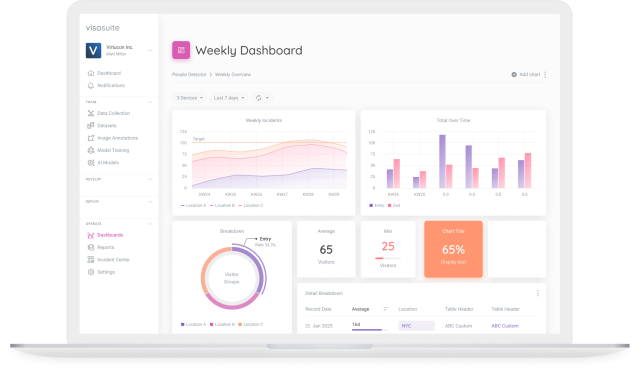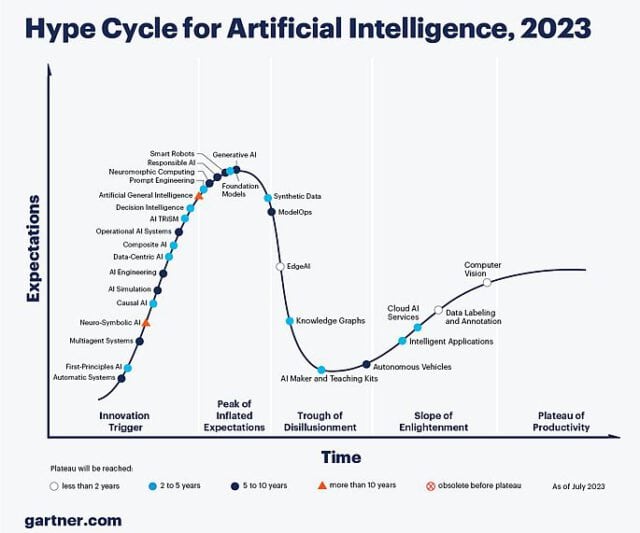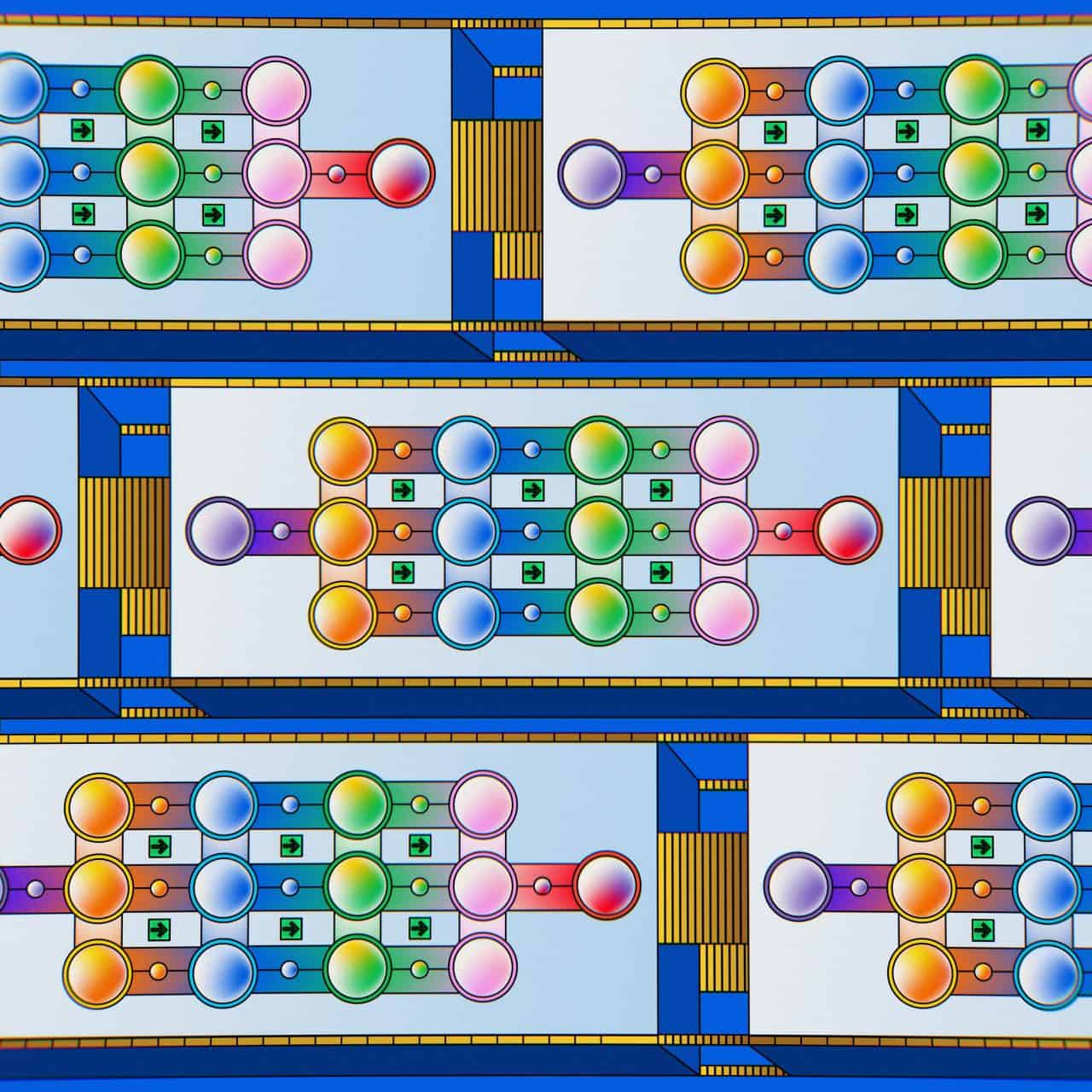Visual intelligence is here to stay
Computer vision (CV) is a field of AI that enables machines to interpret and act on visual intelligence and visual information. Machines perform these tasks just as we humans do, but with far greater speed, consistency, and scalability.
In industries like manufacturing, construction, logistics and supply chain, and more, visual intelligence means turning video feeds and image data into actionable insights.
Specifically, this means that:
Firstly, in manufacturing, CV ensures business continuity and increased efficiency across the manufacturing value chain:
- Powering automated quality inspection lines
- Detecting product defects in real-time, and
- Driving predictive maintenance by identifying early signs of wear on equipment
Secondly, on construction sites it radically manages out risks and reduces costs:
- Enhancing and automating worker safety through real-time monitoring
- Ensuring compliance with PPE standards, and
- Tracking project progress via drone imagery and site surveillance
And thirdly, in logistics and supply chain, it transforms operational visibility and accelerates decision-making:
- Enabling automated cargo inspection at warehouses and ports
- Optimizing routing and loading through real-time vehicle and asset tracking, and
- And proactively mitigating disruptions via anomaly detection in distribution hubs and transit corridors
All of this matters because all industries today face mounting pressure to improve operational efficiency, reduce costs, and adapt to labor shortages. And all while maintaining high standards of safety and customer experience.
The emergence of Viso Suite
As industries accelerate toward automation and data-driven decision-making, visual intelligence and vision systems have emerged as the digital eyes of truly intelligent operations.
The impact and potential of CV are transformative and limitless. According to McKinsey, CV alone could contribute between $1.2 trillion and $2.0 trillion annually to the global economy by 2030–2035. The manufacturing sector alone is expected to account for up to 30% of that impact, roughly $360–600 billion annually.

Founded in 2018 by Swiss entrepreneurs Gaudenz Boesch and Nico Klingler, viso.ai is on a mission to lead this transformation and make AI Vision accessible and scalable for businesses. From this mission was born Viso Suite, the leading end-to-end visual intelligence infrastructure to build, deploy, and scale AI vision dramatically faster and better.
Viso Suite allows businesses to unify their visual intelligence applications on one platform that’s easy to use. Delivering rapid ROI, AI Vision transforms operational visibility into a competitive edge. Allied with an end-to-end approach, the single platform allows businesses to collect, manage, and analyze visual data seamlessly. This facilitates real-time decision-making and operational improvements.
By integrating every step of the computer vision lifecycle – from data capture to deployment – into a single platform, viso.ai empowers teams to implement AI-driven solutions without extensive technical expertise.

Visual intelligence, streamlining operations
We are often asked by clients and partners, ‘What does viso stand for?’.
From a people, culture, and values perspective, viso stands for ‘building the exceptional’. And while “viso” isn’t an acronym, it does aptly encapsulate what we are about, namely: visual intelligence, streamlining operations.
By transforming standard camera feeds into intelligent data sources, viso.ai enables real-time monitoring and analysis. This visual intelligence allows for proactive identification of issues such as equipment malfunctions, safety hazards, and process inefficiencies.
In turn, this provides opportunities to radically streamline operations, automating routine tasks, optimizing resource allocation, and facilitating swift responses to emerging challenges. viso.ai’s platform supports these objectives by providing tools that are easy to deploy and integrate into existing systems, minimizing disruption and maximizing return on investment.
Drilling into the eye-watering numbers above, where in just a few short years, visual intelligence will save global industry over $1 trillion a year, we have seen multiple areas that those savings are derived from:
- Quality control (automated inspection)
(up to 50% reduction in quality-related labor costs) - Safety and compliance monitoring
(up to 40% fewer incidents, saving $20–50k per incident) - Labor optimization
(reduced dependency on manual inspection by 70–80% in some use cases) - Waste reduction
(5–10% decrease in material waste from early error detection) - Process adherence (and standardization)
(10–15% increase in throughput or OEE (Overall Equipment Effectiveness))
Just as sight is essential to human intelligence, teaching machines to see, with use cases like the above, powered by visual intelligence, unlocks a deeper and more intuitive understanding of the world.
Computer vision is here to stay
The pace of change in technology continues to accelerate rapidly in the era of AI. Yet with many new applications, platforms, and use cases emerging, sometimes it is difficult to separate the hype from reality, the substance from the style.

The Hype Cycle from Gartner presents the pace of AI development both today and in the future. It emphasizes the opportunities for innovation and the potential risks. In our analysis of the Gartner Hype Cycle on AI last year, we observed that computer vision was somewhere amid the final two phases, namely:
The Slope of Enlightenment: When early adopters see initial benefits, and others start to understand how to adopt the innovation in their organizations.
The Plateau of Productivity: the point at which more users see real-world benefits, the innovation is widely accepted, and mainstream adoption is seen.
In our work with early adopters, and now subsequent waves following in their footsteps, we see further evidence that validates that we are now safely in that final phase.
Computer vision is truly here to stay, powered by visual intelligence, that streamlines operations. And if that’s not worth shouting about, we don’t know what is.
